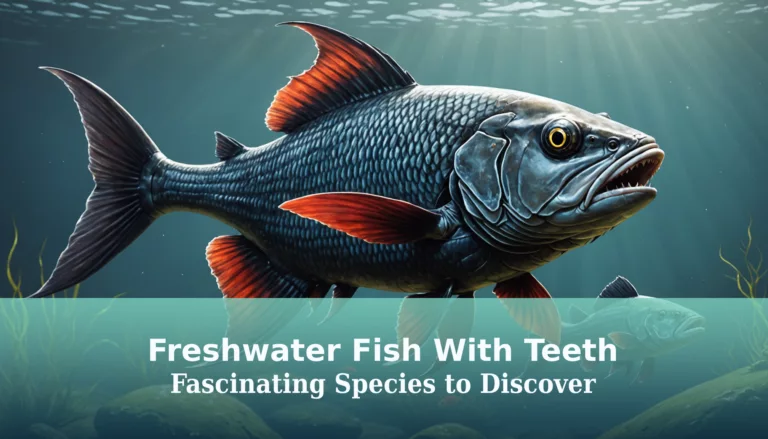As we explore the intricate world of betta fish, one intriguing aspect that often goes unnoticed is their teeth. These small yet powerful structures are key players in the betta fish’s predatory lifestyle, finely tuned for capturing and consuming prey. But what exactly do these teeth look like up close, and how do they function within the betta fish’s ecosystem?
By taking a closer look at the details of betta fish teeth, we uncover a world of precision and adaptability that sheds light on the remarkable evolutionary journey of these mesmerizing creatures.
Key Takeaways
- Betta fish teeth are small yet powerful, aiding in efficient prey capture.
- Their teeth have pointed structures to tear and break down food effectively.
- Teeth are multipurpose, used for gripping, tearing, and puncturing prey.
- Evolutionary adaptations equip Bettas for their carnivorous diet and hunting strategies.
- Close-up views reveal intricate details and adaptations of Betta fish teeth.
Understanding the Role of Teeth in a Betta Fish’s Diet
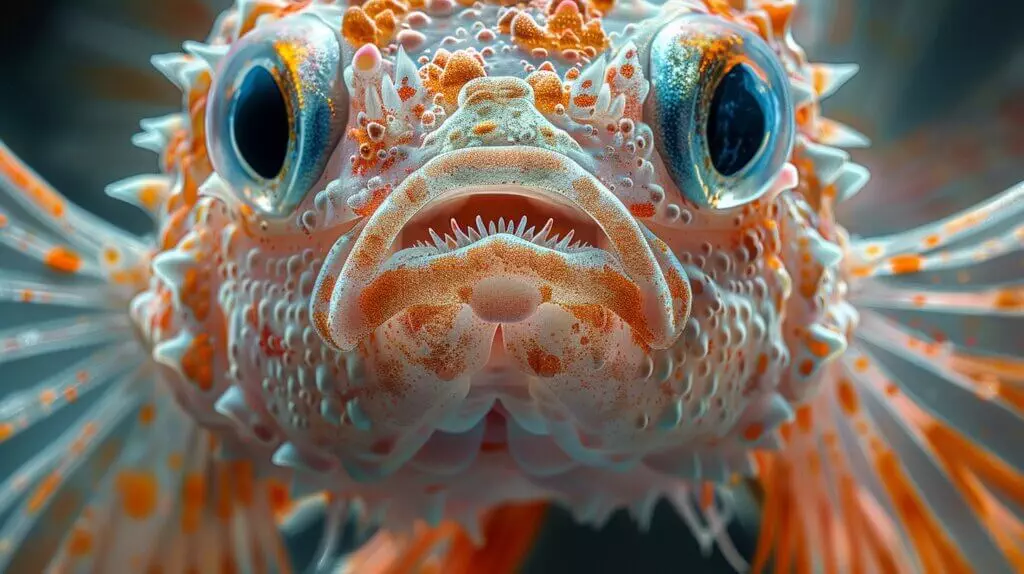
Betta fish’s sharp incisors play a vital role in grasping and tearing food. Their teeth are designed not just for eating but also as self-defense weapons and instruments of dominance. In their natural habitat, these teeth are crucial for catching live prey like insects and larvae. Even in captivity, betta fish thrive on a diet rich in protein, such as high-quality pellets, bloodworms, and brine shrimp. Their teeth play a significant role in breaking down these foods into manageable pieces for digestion.
Recognizing the importance of teeth in a betta fish’s diet sheds light on the delicate balance required for their optimal health and well-being. By providing a varied diet that accommodates their carnivorous nature and protein-rich foods, we ensure that their teeth serve them well throughout their lives. Proper nutrition not only supports their physical health but also bolsters their natural behaviors and instincts. Betta fish teeth aren’t just tools for eating but integral components of their overall survival strategy.
A Closer Look at Betta Fish Teeth: Anatomy and Function
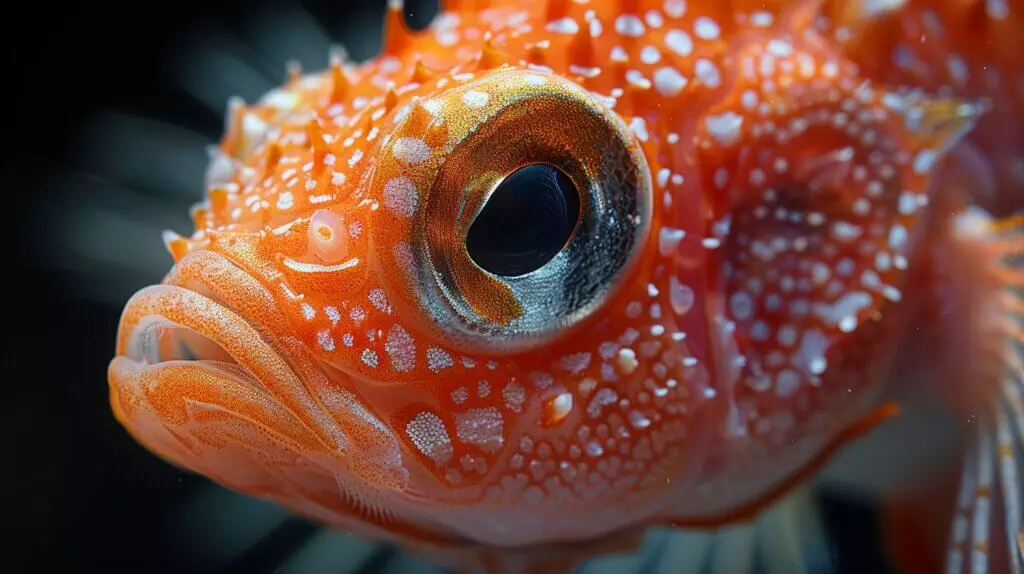
Further exploring betta fish teeth reveals the intricate anatomy and multifunctional role these sharp incisors play in their everyday lives. These small, yet potent teeth located in their mouth assist in capturing prey and consuming it efficiently. Breeding betta fish also involves the use of their teeth in a fascinating display of courtship and mating behavior. Male bettas use their teeth to build bubble nests for their potential mates, and during the intense nature of breeding, these teeth can also be used for aggression and territorial disputes. Understanding the role of betta fish teeth provides insight into their behavior and is essential for maintaining their health and well-being in captivity.
Betta fish teeth consist of pointed structures lining their jaw, designed to tear and break down food effectively. Unlike some other aquatic creatures, betta fish teeth aren’t for grinding, but rather for puncturing and holding onto their prey. Understanding the structure and function of these teeth provides insight into the evolutionary adaptations equipping bettas for their carnivorous diet.
Betta Fish Bite: Understanding the Mechanism
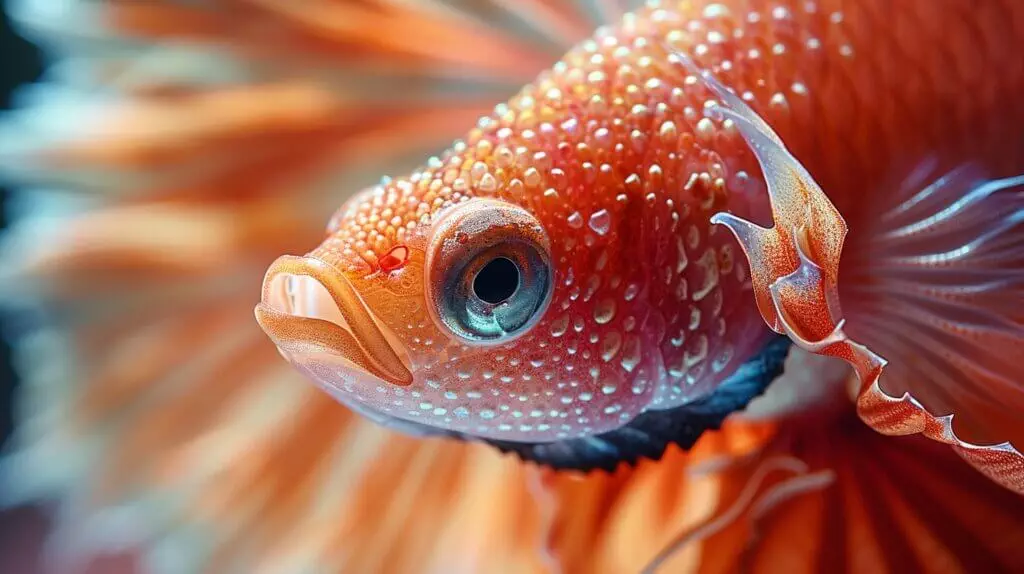
Upon closer examination of betta fish teeth anatomy and function, it’s intriguing to understand how these sharp incisors contribute to the Betta Fish Bite. Here are some insights:
- Precision Strikes: Betta fish use their teeth with remarkable precision, targeting specific areas on their prey or opponents.
- Quick and Efficient: Their bite is swift, allowing them to capture prey or defend their territory rapidly.
- Multi-Purpose: Betta fish use their teeth not only for biting but also for gripping and tearing food items.
- Adaptability: The mechanism of the Betta fish bite showcases their adaptability to different situations, whether hunting or asserting dominance.
Understanding how betta fish utilize their teeth in the biting process provides insight into their hunting strategies and social behaviors.
Human Interaction with Betta Fish: Teeth and Bites
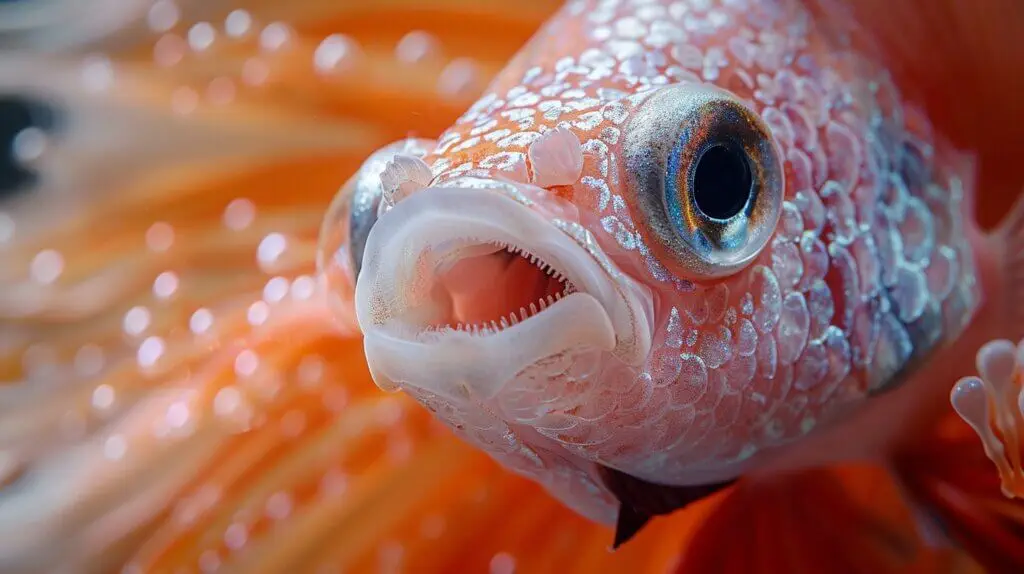
Understanding betta fish teeth and potential bites is crucial for ensuring a harmonious relationship. While betta fish do have teeth, they aren’t designed to bite humans intentionally. However, there’s a chance of getting nipped if they feel threatened or mistake a finger for food. These bites are harmless and feel like a tiny pinch due to their small size and blunt teeth.
Prevent accidental bites by observing the Betta’s body language and avoid sudden movements. Building trust through regular feeding and gentle interactions can help minimize the chances of getting bitten. Betta fish use their teeth primarily for catching and consuming prey in the wild, so understanding this aspect of their biology can foster a more enriching human-fish relationship.
Can Betta Fish Also Have Gender Differences Like Comet Goldfish?
Yes, betta fish also have gender differences like identifying comet goldfish genders. Male bettas have long, flowing fins and bright colors, while females have shorter fins and duller colors. It’s important to be able to identify the gender of your betta fish, especially if you plan on breeding them.
Sharing the Story of Betta Fish Teeth: Education and Fascination
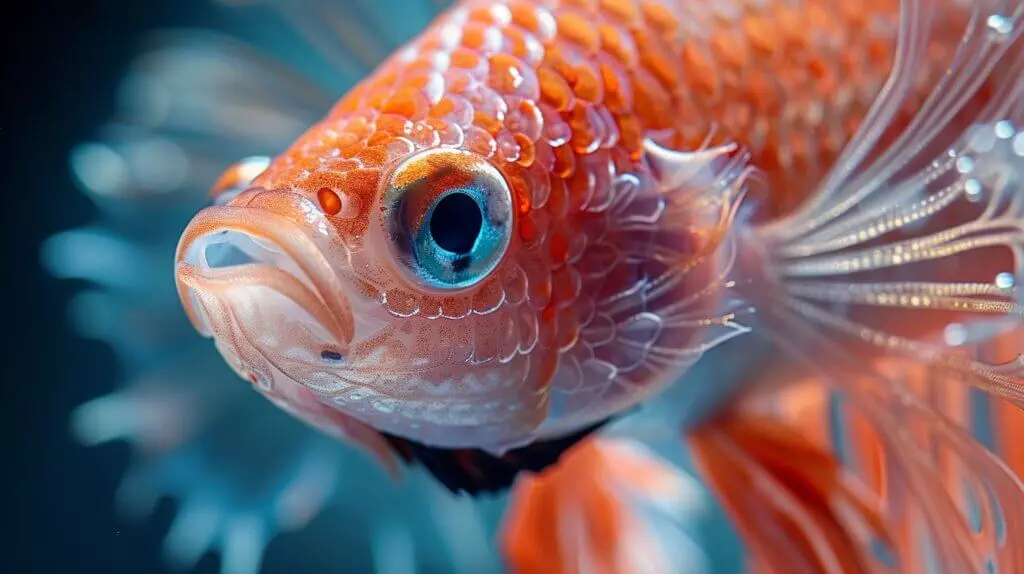
Exploring the intricate world of Betta fish teeth reveals a riveting narrative that intertwines their dietary habits with their defense mechanisms. When delving into the domain of Betta fish teeth, here are four captivating aspects:
- Dietary Delicacies: Betta fish teeth are finely tuned for their omnivorous diet, allowing them to feast on a variety of foods in their natural habitats.
- Defensive Arsenal: These tiny teeth also serve as a line of defense, deterring potential threats and asserting dominance when needed.
- Close-Up Encounters: Close-up views of Betta fish teeth showcase the intricate details and adaptations that make them efficient predators.
- Educational Outreach: Through blogs and media platforms, we can share the story of Betta fish teeth, fostering a deeper understanding and appreciation for these remarkable creatures.
Conclusion
To sum up, delving into the world of betta fish teeth has provided us with a captivating glimpse into the intricate adaptations of these carnivorous creatures.
Their small yet powerful teeth play a vital role in their diet, aiding them in thriving on a protein-rich menu.
By understanding the anatomy and function of betta fish teeth, we can better appreciate the unique evolutionary adaptations that allow these creatures to excel in their predatory instincts.
Betta fish teeth truly showcase the wonders of nature’s design.
Frequently Asked Questions
Do betta fish have teeth?
Yes, betta fish do have teeth. Their teeth are known as bristles and are located in their throats.
What is the perfect tank for betta fish?
A betta fish tank should be at least 5 gallons in size with a filter and heater to maintain water quality and temperature.
How do betta fish use their teeth?
Betta fish use their teeth as weapons to attack other fish, especially in territorial disputes.
What are the signs of a betta fish with white teeth?
White teeth in a betta fish may indicate a sign of stress, fear, or discomfort. It’s essential for the owner to carefully observe the betta’s behavior in such a circumstance.
Can you magnify a betta fish’s teeth?
Yes, using a magnifying glass or a camera lens, one can magnify a betta fish’s teeth to get a closer look at them.





